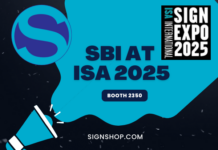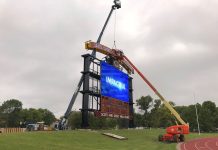ISA has done this work with planners through our successful Planning for Sign Code Success™ events, where ISA joins the Sign Research Foundation (SRF) to offer in-person training on how signs work and how they should be regulated. We’ve deepened relationships with the American Planning Association, with many of our presentations receiving approval to offer continuing education credits to certified planners at their National Planning Conference and at numerous regional APA events.
While planners are critical in developing sign codes, they are hardly the only local stakeholder our industry encounters. With more than 20,000 local municipalities across the United States, each has their own sign ordinances and codes—and each may have their own local officials who play a role in regulating signs. While you may never encounter some on a jobsite, the signs you sell will be impacted by their decisions.
Let’s look at some of them and understand how ISA works with these groups:
Building inspectors play a crucial role in enforcing sign regulations and ensuring that sign projects comply with building codes, zoning laws, and safety requirements. Depending on the local jurisdiction, their main focus is usually on reviewing sign permit applications and conducting inspections at various stages of the sign project to ensure compliance with approved plans and safety standards. They are often known as an “authority having jurisdiction” (AHJ) that is responsible for code enforcement.
So how does ISA work with building inspectors? We do in a few key ways:
- ISA works to ensure that sign products are clearly identified and regulated in some of the federal codes that building inspectors rely on, like the National Electric Code.
- ISA also works with testing laboratories like UL. Many building inspectors look for UL labels on installed products.
City attorneys are the lawyers representing their local municipality. They help draft and review the legal aspects of sign codes when requested by the city council, collaborating with the planning commission and other city departments to ensure sign regulations are legally sound and enforceable, and even represent their city in litigation arising from sign code challenges. Recent U.S. Supreme Court decisions involving content-neutrality have elevated the relevance for city attorneys in sign codes.
ISA’s work with city attorneys include:
- Providing webinars on legal issues to members of the International Municipal Lawyers Association (IMLA), the professional society that represents over 6,000 city attorneys.
- ISA has exhibited at IMLA conferences.
- We work alongside the municipal attorney to ensure the proposed sign codes comply with recent case law.
Traffic engineers shape sign regulations through their studies and expertise, providing input to local officials on traffic management and safety implications. They also ensure that local sign installations comply with national and state standards, such as the Manual on Uniform Traffic Control Devices (MUTCD). Traffic engineers may not provide sign policy directly, but their technical expertise informs how other local government officials develop sign regulations. The Sign Research Foundation’s (SRF) research on EMCs and traffic safety was developed by a prominent transportation engineer and is frequently used in developing sign codes. ISA worked with others in our industry to influence the latest version of the MUTCD, particularly related to wayfinding signs.
A city manager is responsible for the daily operations of the local jurisdiction. This means directing and supervising the departments that develop and ensure compliance with sign codes. ISA considers city managers to be a key stakeholder in the sign code process, which is why we have participated in several International City/County Managers Association (ICMA) conferences, meeting with hundreds of city managers to emphasize the need for their communities to have effective and beneficial sign regulations.
If your sign shop works in one community exclusively, perhaps you know those who serve in all these roles. But it can be difficult to make those connections across multiple jurisdictions. That’s why ISA has focused on building bridges at a much bigger level, to help these officials make informed decisions about signs—and help you get signs built.
Have a sign code issue? Contact [email protected] to see how ISA can help.











